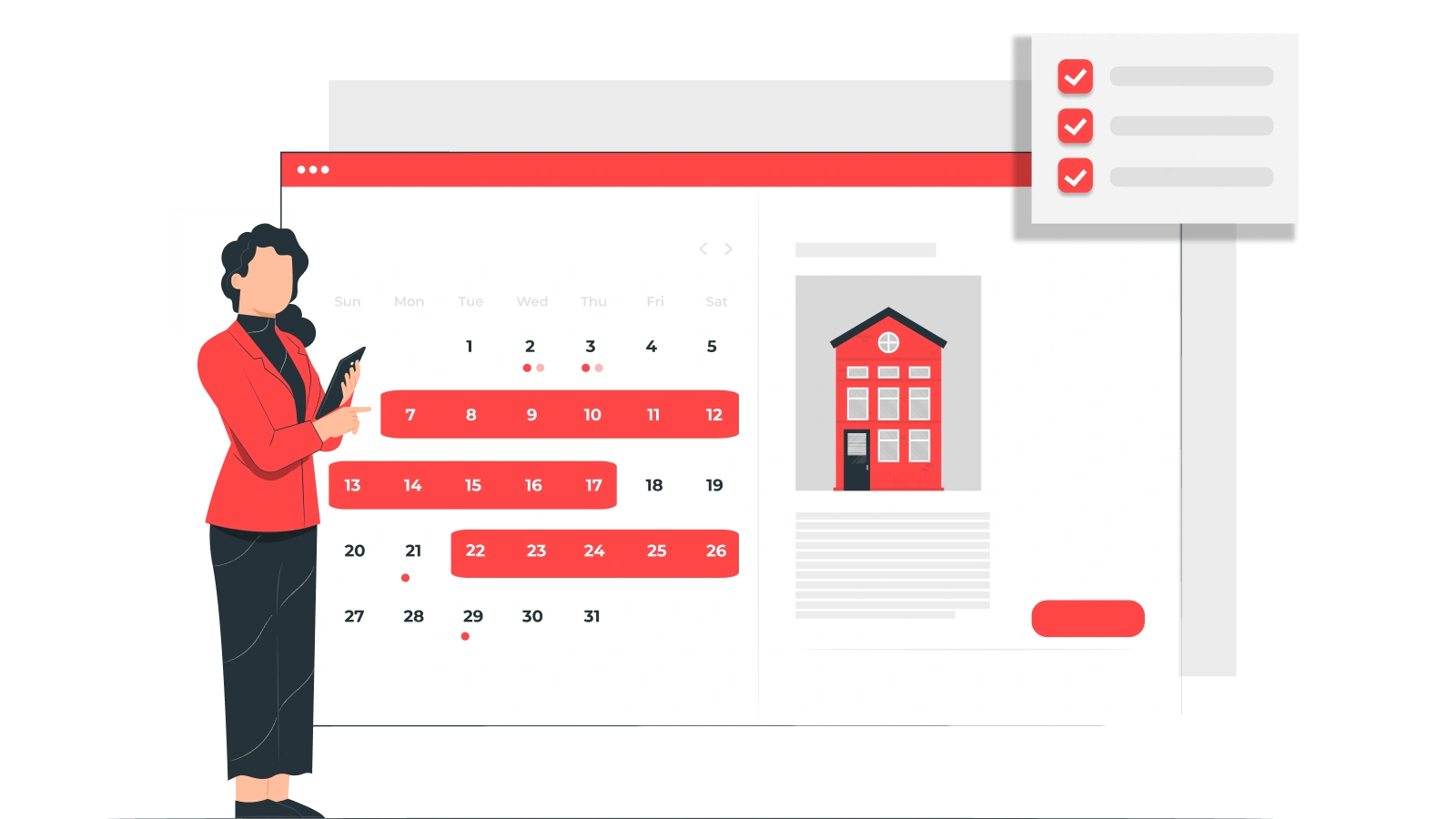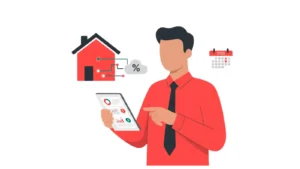Updated : Oct 16, 2025
If you’re a property manager, you know the drill: chasing those high-rate weekend bookings is tempting, but the absolute path to peace of mind and better profits is securing longer vacation rental stays. All those two-night turnovers are eating away at your cleaning budget and stressing out your operations team.
The pros—the top revenue managers in the industry—have figured out how to shift the focus. Based on expert strategies shared by experienced revenue managers, Fabio Castiblanco, Head of Revenue and Analytics, Sosuite, and Natalia Alzate, Finance Specialist at Blue Gems MGMT, along with PriceLabs experts Kyle Driskell, Senior Solutions Consultant at PriceLabs, in a recent RevLabs Masterclass series.
Here is your detailed, actionable game plan on how to get longer vacation rental stays and finally make your property portfolio work smarter, not just harder.
1. The Strategic Edge: Why Longer Stays Make Sense
It’s not just about booking more nights; it’s about operating more efficiently when managing a short-term rental portfolio. Why should you stop accepting two or three nights and push for four, five, or even seven?
- Stable Income, Less Stress: Longer stays, especially mid-term rentals (28+ days), mean consistent, predictable income. You trade a slightly lower nightly rate for 100% occupancy for a month, which is a massive win for stability.
- A Break for Your Team: Fewer turnovers mean less frequent cleaning, less wear and tear on your properties, and lower operational costs. Your housekeeping and maintenance teams will appreciate your efforts.
- Building Loyalty: When a guest stays longer, they become more invested in the property. You have more opportunities to build a relationship, ensuring they leave a great review and, most importantly, get direct bookings from them when they book their next long trip directly with you.
2. Mastering Your Minimum Stay Rules (Ditch the Fixed Settings)
The biggest mistake property managers make is setting rigid minimum stay restrictions. A flexible, data-backed approach is key. To figure out how to get longer vacation rental stays, you need to think dynamically.
Flexing Rules Based on Time and Demand
- Reward Early Commitment: Guests who book well in advance (3+ months out) are planning a proper vacation. Utilize your length-of-stay settings to proactively promote stays of 4 nights or longer during these early booking windows.
- Be Smart in Peak Season: While you don’t want to fill your high season with discounted long stays, you should move beyond the standard two-night weekend minimum. Consider increasing the minimum stay to three or even four nights for high-demand summer weekends or holidays.
- Ditch Legacy Restrictions: In the RevLabs episode, Natalia Alzate says, “It is so important to always be flexible with your goals, and be flexible with your strategy to adapt to market changes. You have to be willing to look at the data and say, ‘My goal this month isn’t just a high ADR; it’s maximizing my length of stay to prepare for the long run.'”
Stop Chasing Short Stays: Unlock the Power of Dynamic LoS & Pricing
Ready to implement the strategies the pros use? Set dynamic minimum stays, incentivize longer bookings with strategic discounts, and automate your gap-filling—all based on real-time market data. Start your free trial today to boost your LoS, cut costs, and maximize revenue.
Start Your Free Trial NowFilling the Gaps with Logic
You can’t afford to leave single-night gaps on your calendar. Use technology to fill them automatically:
- Orphan Day Customization: Make sure your software can identify a vacant night wedged between two existing reservations (an “orphan day”). Allow a one-night booking only if it fills that specific gap.
- Adjacency Logic: Use system logic to offer an extra night before arrival or after departure to existing guests. These extension offers are much easier to secure than finding a brand-new one-night booking. Fabio Castiblanco, Head of Revenue and Analytics, Sosuite, says, “If you can get the guest who is already booked to extend their stay by one night, that is always going to be an easier and more profitable booking than trying to attract a brand new one-night stay from the market.”


3. Pricing to Encourage Commitment, Not Just Volume
You need your pricing strategy to incentivize the length of stay, not just the nightly rate.
- Incentivize with LoS Discounts: This is a crucial step when considering how to get longer vacation rental stays. Utilize length-of-stay discounts (weekly and monthly) to maintain a flexible overall rate, making the longer duration a more attractive option for guests. If you have to lower your rate during the shoulder season, ensure you get a more extended stay in return to protect your RevPAR.
- Don’t Scare Away Early Bookers: If you’re hunting for those long-stay planners, make sure you disable the “far-out premium” feature in your dynamic pricing tools. A massive, placeholder rate months in advance immediately drives away someone looking to book a month-long trip.
- Configure Monthly Discounts: Many listings overlook setting their monthly discounts, missing out on significant demand. Double-check that your 28+ day discount is appealing and correctly synced across all OTAs and your direct site.
4. Automated Short-term Rental Upselling and Guest Loyalty
Once the guest is booked, your goal shifts to securing incremental revenue and planting the seed for a future stay with short-term rental upsells.
- Automated Gap Night Upselling: Use AI-powered tools (like Bestie AI) to automatically message guests with an existing reservation and offer them an adjacent shoulder night (the night before they arrive or the day they leave). This functionality is timely and highly effective for filling those calendar gaps.
- Value-Add Extensions: Early check-in and late check-out are low-friction revenue generators. They increase the total booking value and improve the guest experience, making a future extension or repeat booking more likely. Natalia Alzate, Finance Specialist at Blue Gems MGMT, “It comes down to the guest experience. If the guest has a stellar experience, they are much more likely to come back and book a longer stay next time, and they are much more likely to accept those extension offers or ancillary revenue services you propose.”
- Personalized Retargeting: Utilize your CRM or AI tools for property management automation and to automatically send customized messages to past guests (e.g., nine months after their anniversary trip). Checking availability for their previous dates is a soft, personal way to turn a past stay into a future, longer one.
5. Winning Over Owners with Data
One of the biggest obstacles to increasing LoS is an owner who insists on a non-negotiable minimum rate or minimum stay. You must use data to align their goals with yours.
- Show the Local Reality: Use competitive data from Market Dashboards to show the owner exactly how their restrictive LoS compares to similar properties. Demonstrate how their restrictions hurt visibility.
- Negotiate a Trial Period: If an owner is reluctant to drop their minimum rate, propose a temporary 60-day trial period during which you operate at your recommended flexible rate. Show them the increased bookings and revenue over that period to build confidence with data. You can use PriceLabs Report Builder to show your owners visible results of your revenue management strategy.
- Emphasize Visibility: Explain clearly that an overly high minimum length of stay is typically more damaging than a high minimum rate because it prevents the listing from even appearing in search results for highly sought-after, shorter bookings.
By adopting these flexible, data-driven pricing strategies, you stop reacting to short-stay chaos and start proactively securing long-stay revenue. Take control of how to get longer vacation rental stays and look forward to a much calmer, more profitable calendar year.
Final Thoughts: The Long-Term View of Revenue Management
The shift from managing individual, two-night stays to actively securing extended bookings is the definitive move from being a busy host to becoming a strategic property manager. It simplifies your operations, stabilizes your cash flow, and ultimately drives greater owner satisfaction.
The key takeaway is that getting longer vacation rental stays is less about luck and more about a disciplined, data-driven strategy. It requires being flexible when the market demands it, firm when the calendar needs protection, and consistently offering a superior guest experience.
Don’t let rigid rules or outdated pricing models hinder your portfolio’s growth. Embrace a dynamic approach, educate your owners with precise data, and utilize automation to capture revenue that might otherwise be left unclaimed.
Ultimately, success hinges on a fundamental principle of sophisticated revenue management. Kyle Driskell, Solutions Consultant at PriceLabs, says, “It is so important always to be flexible with your goals and be flexible with your strategy to adapt to market changes. You have to be willing to look at the data and say, ‘My goal this month isn’t just a high ADR; it’s maximizing my length of stay to prepare for the long run.'”
Start implementing these professional strategies today to reduce churn, fill calendar gaps, and boost your revenue while fostering more efficient operations year-round.






